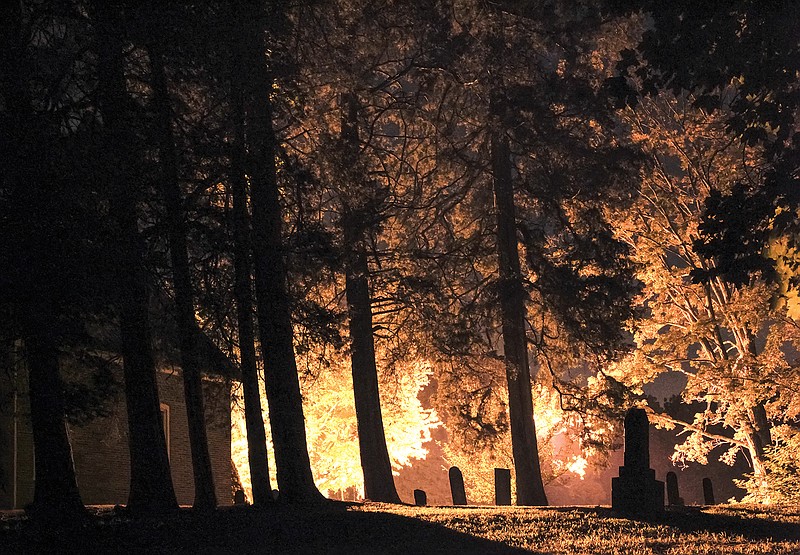The journeys fugitive slaves undertook along the Underground Railroad to seek their freedom tell of harrowing tales and courageous struggle.
One photographer strives to capture what it felt like to take these journeys, guided by the North Star and faith in others, in an exhibit that opens next week at the Regional Arts Center. It runs through March 16.
With four dozen photographs, self-described "artist activist" Jeanine Michna-Bales captured hundreds of miles worth of locations along the Underground Railroad, including such places as a Cane River plantation in Louisiana, Mammoth Cave in Kentucky and Ohio River trees in Indiana.
Often dark with just glimmers of light, the photographs in "Through Darkness to Light: Photographs Along the Underground Railroad" depict with dramatic intensity what these fugitives likely saw as they fled their slave masters and traveled north, under the cover of night, to safer places.
Amy Donohoe, director of visual arts and community programs for the Texarkana Regional Arts and Humanities Council, said the photos show places these slaves would have traveled along while hidden. "Basically pathways from their perspective," she said.
"Obviously, most of them are very dark because you would have to have traveled at night for your safety," Donohoe said. Some depict buildings, but many simply depict the landscape: a forest, a swamp, a cornfield-places that offered ideal refuge for hiding. While they offered temporary refuge, the journey was perilous.
"You couldn't light a fire because people would see the smoke. You couldn't take much (in the way of) provisions with you because when you left, even if you had planned it out, you couldn't afford to take that much with you," Donohoe said. "You may not be eating for days, having to swim across the rivers if there wasn't a boat available. And that's assuming that you had a conductor, who would be a person who would be leading you."
Many slaves seeking their freedom on the Underground Railroad didn't have a conductor, said Donohoe, who's researched the Underground Railroad and slave narratives herself. According to Exhibits USA, the exhibit organizer, roughly 100,000 slaves underwent this journey between 1830 and 1865 when the Civil War ended.
"It's amazing how strong the will and spirit of humans can be," Donohoe of the slaves who took this journey. "It's a really dark stain on American history, but I feel that it's one that's been whitewashed a lot."
The photographer's Underground Railroad photographs have appeared in group shows across the country. Publications like The Washington Post and broadcasters like NBC have featured Michna-Bales' work. Princeton Architectural Press published a book of the photograph series, and her research into these sites spanned more than a decade.
This exhibition comes to the RAC courtesy of ExhibitsUSA, a Mid-America Arts Alliance program. In addition to being shown here in Texarkana, the exhibit will next travel to Virginia, Louisiana, Ohio, Missouri, South Carolina and Florida.
They're photographs that reward close examination and study as their meaning is contemplated.
"Because they're so dark, I find it requires you to really look close and think about what you're seeing," Donohoe said, adding, "There's some gorgeous nighttime photography."
School groups or other groups interested in signing up for free guided tours of the exhibit should contact Donohoe.
"This is a really great opportunity to basically have supplementary material for lesson plans if you're covering this in history, or if you're just genuinely curious," Donohoe said.
On Saturday, Feb. 10, guided tours will also happen during the special afternoon event hosted by TRAHC's African-American Committee from noon to 3 p.m.
(Admission is free. The RAC is open at 321 W. 4th St. in Texarkana, Texas, Tuesdays through Saturdays, 10 a.m. to 4 p.m. More info: 903-792-8681 or TRAHC.org.)

